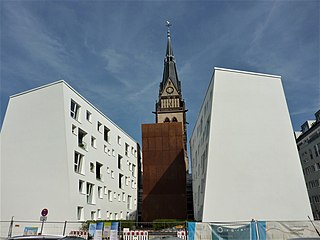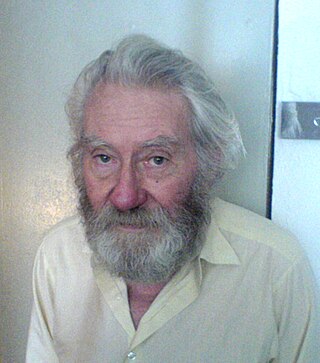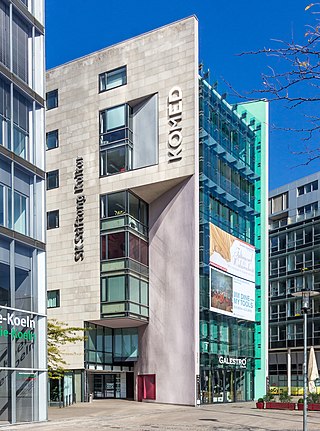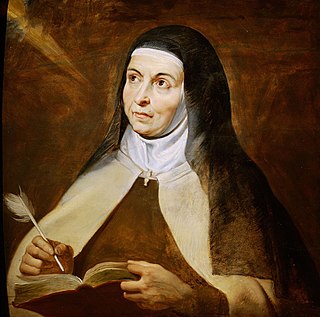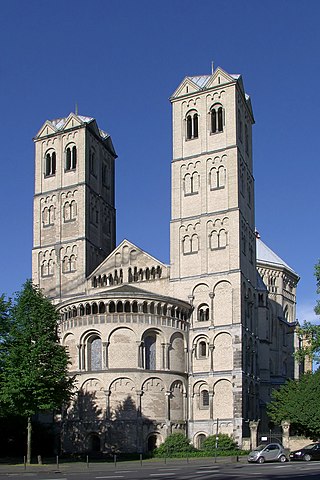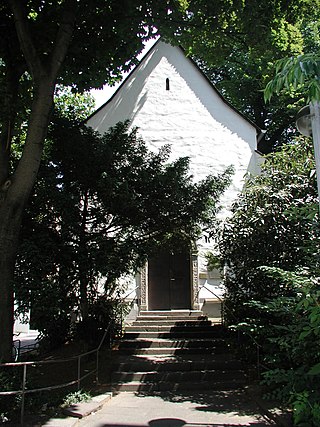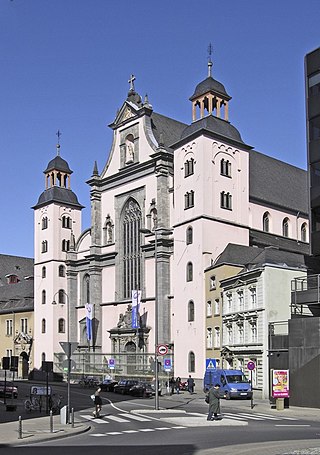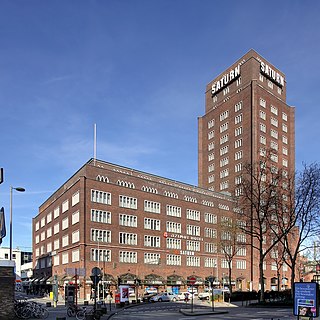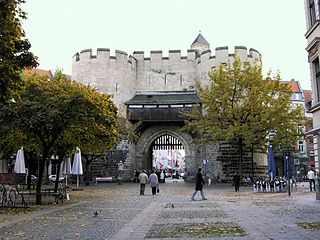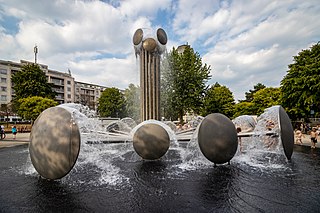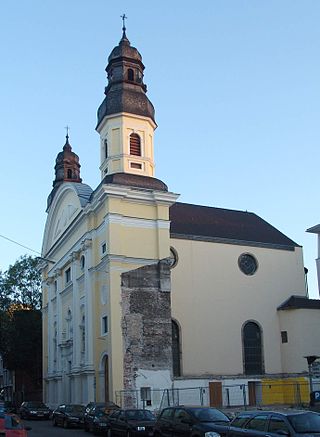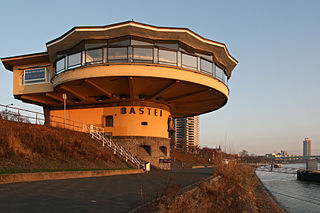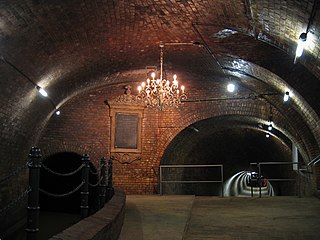Self-guided Sightseeing Tour #9 in Cologne, Germany
Legend
Guided Free Walking Tours
Book free guided walking tours in Cologne.
Guided Sightseeing Tours
Book guided sightseeing tours and activities in Cologne.
Tour Facts
8.2 km
114 m
Experience Cologne in Germany in a whole new way with our free self-guided sightseeing tour. This site not only offers you practical information and insider tips, but also a rich variety of activities and sights you shouldn't miss. Whether you love art and culture, want to explore historical sites or simply want to experience the vibrant atmosphere of a lively city - you'll find everything you need for your personal adventure here.
Activities in CologneIndividual Sights in CologneSight 1: Neu St. Alban
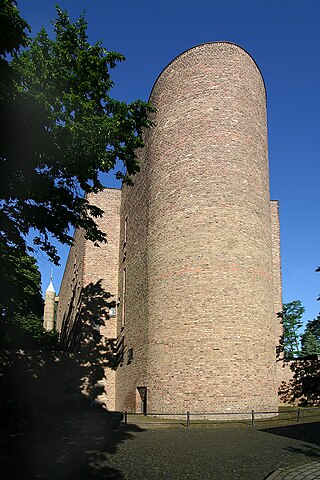
Neu St. Alban is a parish church in the Neustadt-Nord district of Cologne, Germany. The church was built in 1958/1959 according to plans by Hans Schilling from rubble bricks. Among other things, building material from the Cologne Opera, which was slightly damaged in the Second World War and demolished in 1958, was used. From the church of Alt St. Alban next to the Gürzenich, preserved furnishings were taken over.
Sight 2: Christuskirche
The Christuskirche is a Protestant church in the Belgian Quarter in Cologne's Neustadt district, originally built in the neo-Gothic style according to plans by the architects August Hartel (1844–1890) and Skjøld Neckelmann (1854–1903) by diocesan master builder Heinrich Wiethase (1833–1893). In February 2014, the nave was demolished by decision of the Evangelical Community of Cologne in order to build a smaller nave and a residential and commercial property with parish rooms on the site according to plans by Klaus Hollenbeck Architekten and MAIER ARCHITEKTEN. The church was reconsecrated in 2016.
Sight 3: Star-Pit
Otto Piene was a German-American artist specializing in kinetic and technology-based art, often working collaboratively. He lived and worked in Düsseldorf, Germany; Cambridge, Massachusetts; and Groton, Massachusetts.
Sight 4: Deutsches Tanzarchiv
The Deutsche Tanzarchiv Köln is a national information and research centre for concert dance in Germany. It is located in the MediaPark in Cologne, North Rhine-Westphalia, with an archive, library, video library and museum on the history around dance for an audience.
Sight 5: Kapelle St. Joseph
The Carmel of St. Joseph in Cologne, founded in the 1850s, was a daughter foundation of the Carmel of Mary of Peace in Schnurgasse, which was first established in Cologne in 1639 and abolished in 1802. However, the new convent only existed until 1875.
Sight 6: St. Gereon's Basilica
St. Gereon's Basilica is a German Roman Catholic church in Cologne, dedicated to Saint Gereon, and designated a minor basilica on 25 June 1920. The first mention of a church at the site, dedicated to St. Gereon, appears in 612. However, the building of the current choir gallery, apse, and transepts occurred later, beginning under Archbishop Arnold II von Wied in 1151 and ending in 1227. It is one of twelve great churches in Cologne that were built in the Romanesque style.
Sight 7: Mariensäule
The Cologne column of Mary is one of the oldest among the Rhenish columns of Mary. This memorial of the veneration of Mary from Udelfanger Sandstein was designed by Vincenz Statz in a neo -Gothic style and completed in 1858; Today the column is on the Gereonsdriesch, a small park in the Altstadt-Nord district in the immediate vicinity of the east choir of the Romanesque church of St. Gereon.
Sight 8: Hl. Konstantin u. Helena
The Church of St. Maria Ablass was a three-aisled basilica with a western quadrangle tower in the northern Cologne suburb of Niederich. It was first mentioned as St. Mary's Church in 927 and was the parish church of the St. Ursula convent until 1804. It was abandoned in 1808 as a result of secularization and the dissolution of the monastery, as it did not become a parish church again. The small Marian chapel, the Maria Ablass Chapel, which was formerly attached to it, commemorates them. Today it is used as the St. Constantine and Helena Church by the Russian Orthodox community of Cologne.
Sight 9: St. Mariä Himmelfahrt
The Catholic parish church of St. Mary's Assumption was for a long time the largest church in Cologne after the cathedral and is one of the few remaining architectural testimonies of the Baroque in the city. The former Jesuit college church, located on Marzellenstraße near the cathedral, was built according to plans by Christoph Wamser, who had already built the Jesuit church in Molsheim (Alsace). This church also served as a direct model for St. Mary's Assumption. Wamser is also documented as a construction manager until 1623. After that, Valentin Boltz from Thuringia took over the construction management and interior design.
Sight 10: St. Ursula

The Basilica church of St. Ursula is located in Cologne, North Rhine-Westphalia, Germany. It is built upon the ancient ruins of a Roman cemetery, where the 11,000 virgins associated with the legend of Saint Ursula are said to have been buried. The church has an impressive reliquary created from the bones of the former occupants of the cemetery. It is one of the twelve Romanesque churches of Cologne and was designated a Minor Basilica on 25 June 1920. While the nave and main tower are Romanesque, the choir has been rebuilt in the Gothic style.
Sight 11: Klingelpützpark
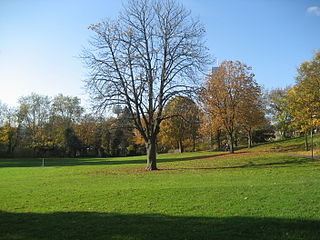
Klingelpützpark is an inner-city landscape park of around 2 hectares in the northern old town of Cologne. It was built between 1969 and 1971 on the site of the demolished Klingelpütz prison and, due to its spacious layout, is an example of urban design typical of the time.
Sight 12: Hansaplatz
Hansaplatz is the name of a park on the southeastern side of the Hansaring in Cologne's Altstadt-Nord, which is bordered by a 113-metre-long remnant of the medieval city wall and the Gereonsmühle.
Sight 13: Hansa-Hochhaus
The Hansahochhaus is a skyscraper in the Neustadt-Nord quarter of north-central Cologne. When constructed in 1924-25 it was the city's first skyscraper, and one of the first skyscrapers in Germany. It was designed as an office building in the Expressionist style by the local architect, Jacob Koerfer. It was constructed in just 135 working days, which was considered less than the time taken to erect comparable buildings in the United States where skyscrapers were already becoming mainstream by the 1920s, but construction of the Hansahochhaus was subject to interruptions so the total construction period stretched over 15 months. With 17 floors and a total height of 65 meters, for a brief period following its construction the Hansahochhaus was Europe's tallest building
Sight 14: Eigelstein Gate
The Eigelsteintorburg on the edge of Cologne's Eigelstein district is one of four surviving city gates of the medieval city wall.
Sight 15: Wasserkinetische Plastik
The Water Kinetic Sculpture is a work of art by the German artist and metal sculptor Wolfgang Göddertz. The fountain sculpture stands in Cologne on Ebertplatz and is a large walk-in fountain in stainless steel.
Sight 16: Tiefrot
Theater Tiefrot is a private theatre in Cologne, North Rhine-Westphalia, Germany. The artistic director is named Volker Lippman, an actor and director, as well as the Tiefrot's founder.
Sight 17: Ursulinenkirche St. Corpus Christi
The Ursuline Church of St. Corpus Christi (Corpus Christi Church) in Cologne is the baroque former monastery church of the Ursuline order and the school church of the neighboring Ursuline school.
Sight 18: St. Kunibert

The Basilica of St. Cunibert also St. Kunibert is the last of Cologne's twelve Romanesque churches to be built. It was consecrated in 1247, one year before work on the Gothic Cologne Cathedral began. It was declared a minor basilica in 1998 by the then Pope John Paul II.
Sight 19: Weckschnapp
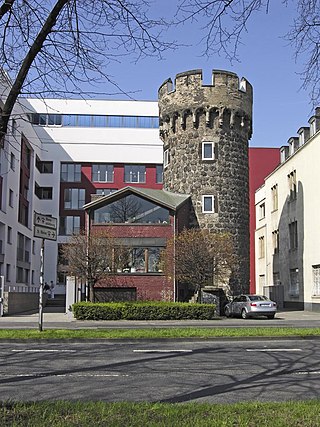
Weckschnapp is the name given to a medieval turret with a modern extension on the Konrad-Adenauer-Ufer on the left bank of the Rhine in the north of the old town, which was part of the medieval city wall of Cologne.
Sight 20: Bastei
The Bastei is a building in Cologne-Neustadt-Nord, located at the northern end of the Cologne Rings directly on the banks of the Rhine. Since its opening on 22 October 1924, the construction with a useful area of 300 m² has been used as a viewing restaurant. Since 2019, the operation has been resting due to structural defects.
Sight 21: Kronleuchtersaal
The sewerage system of Cologne is part of the water infrastructure serving Cologne, Germany. Originally built by the Roman Empire in the 1st century, the city's sewer system was modernised in the late 19th century. Parts of the subterranean network are opened for public tours, and the unusual Chandelier Hall hosts jazz and classical music performances.
Share
How likely are you to recommend us?
Disclaimer Please be aware of your surroundings and do not enter private property. We are not liable for any damages that occur during the tours.
GPX-Download For navigation apps and GPS devices you can download the tour as a GPX file.
